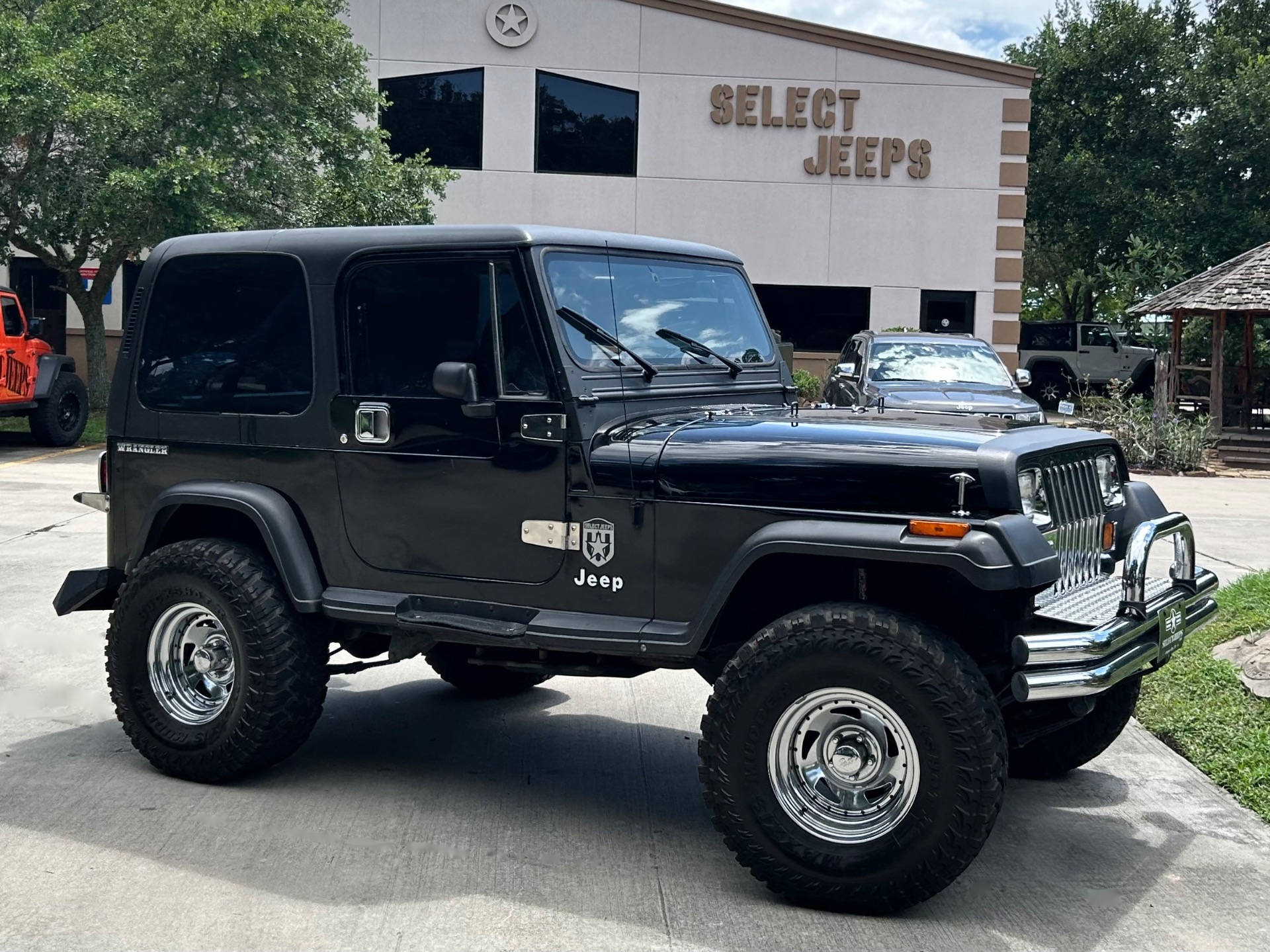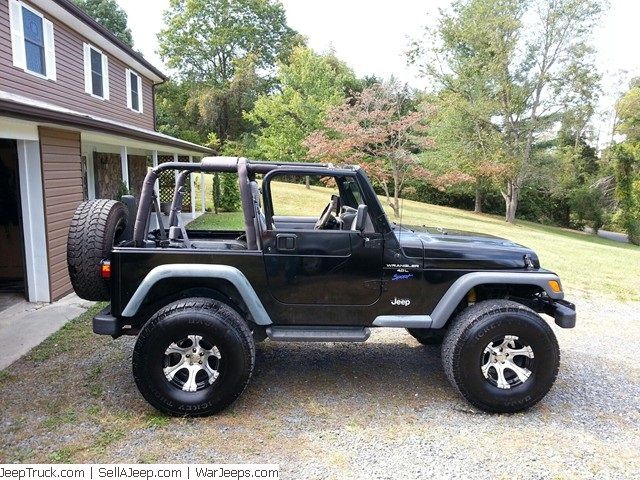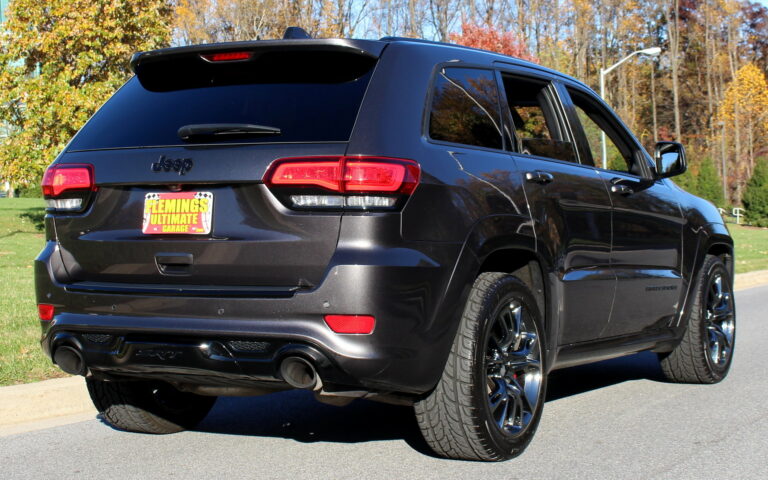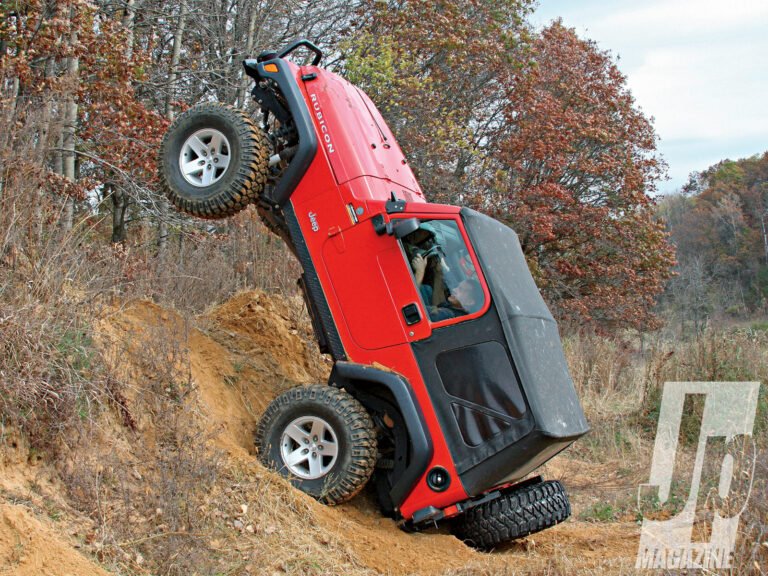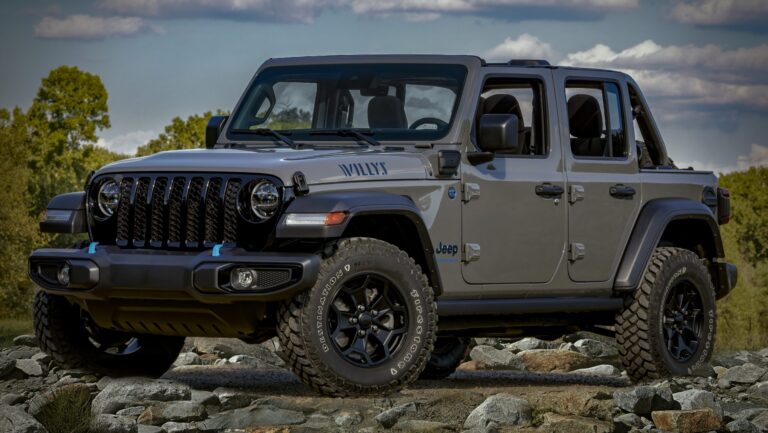Used 97 Jeep Wrangler For Sale: Your Ultimate Guide to Finding and Owning an Off-Road Legend
Used 97 Jeep Wrangler For Sale: Your Ultimate Guide to Finding and Owning an Off-Road Legend jeeps.truckstrend.com
The allure of a Jeep Wrangler is undeniable. It represents freedom, adventure, and a connection to the open road – or, more accurately, the open trail. Among the pantheon of iconic Jeep models, the 1997 Jeep Wrangler, often referred to by its chassis code "TJ," holds a particularly special place in the hearts of enthusiasts and casual drivers alike. As the first year of the revolutionary TJ generation, it marked a significant evolution for the Wrangler, blending classic ruggedness with improved on-road manners.
If you’re currently searching for a "Used 97 Jeep Wrangler For Sale," you’re not just looking for a vehicle; you’re seeking a piece of automotive history that offers unparalleled customization, a vibrant community, and an enduring spirit of exploration. This comprehensive guide will delve into everything you need to know about buying, owning, and maintaining a 1997 Jeep Wrangler, ensuring you make an informed decision and embark on your off-road journey with confidence.
Used 97 Jeep Wrangler For Sale: Your Ultimate Guide to Finding and Owning an Off-Road Legend
Why the 1997 Jeep Wrangler (TJ) Stands Out
The 1997 model year was pivotal for the Jeep Wrangler. It introduced the TJ platform, which replaced the leaf-sprung YJ model and brought back the classic round headlights, much to the delight of purists. But the most significant change was beneath the surface: the TJ adopted a coil-spring suspension system on all four corners, a radical departure that vastly improved ride comfort and handling both on and off-road, without sacrificing the legendary articulation and durability Jeep owners demand.
Key features that make the 1997 TJ a highly desirable used vehicle include:
- Reliable Powertrain: Most 97 TJs came with the venerable 4.0-liter AMC inline-six engine (242 cubic inches), renowned for its bulletproof reliability, ample low-end torque, and longevity. This engine, paired with either a 5-speed manual (AX-15) or a 3-speed automatic (32RH) transmission, is a workhorse.
- Solid Axles: Retaining the robust Dana 30 front and Dana 35 rear axles (or optional Dana 44 rear), the TJ maintains its off-road prowess, capable of handling challenging terrains.
- Classic Jeep Aesthetics: With its iconic seven-slot grille, round headlights, removable doors, fold-down windshield, and soft top/hardtop options, the 97 TJ embodies the quintessential Jeep look that has captivated generations.
- Immense Customization Potential: The TJ platform is arguably one of the most customizable vehicles ever made, with an aftermarket brimming with parts for lifts, bumpers, winches, armor, and much more.
- Strong Community Support: Owning a TJ means joining a vast and passionate community. Resources, advice, and camaraderie are readily available through online forums, clubs, and local events.

For many, the 1997 TJ strikes the perfect balance between modern comfort and classic Jeep ruggedness, making it an excellent entry point into the world of off-roading or a fantastic project vehicle for seasoned enthusiasts.
What to Look For When Buying a Used 97 Jeep Wrangler
When scouting for a "Used 97 Jeep Wrangler For Sale," a thorough inspection is paramount. These vehicles are nearly three decades old, and their condition can vary wildly depending on how they were used and maintained.
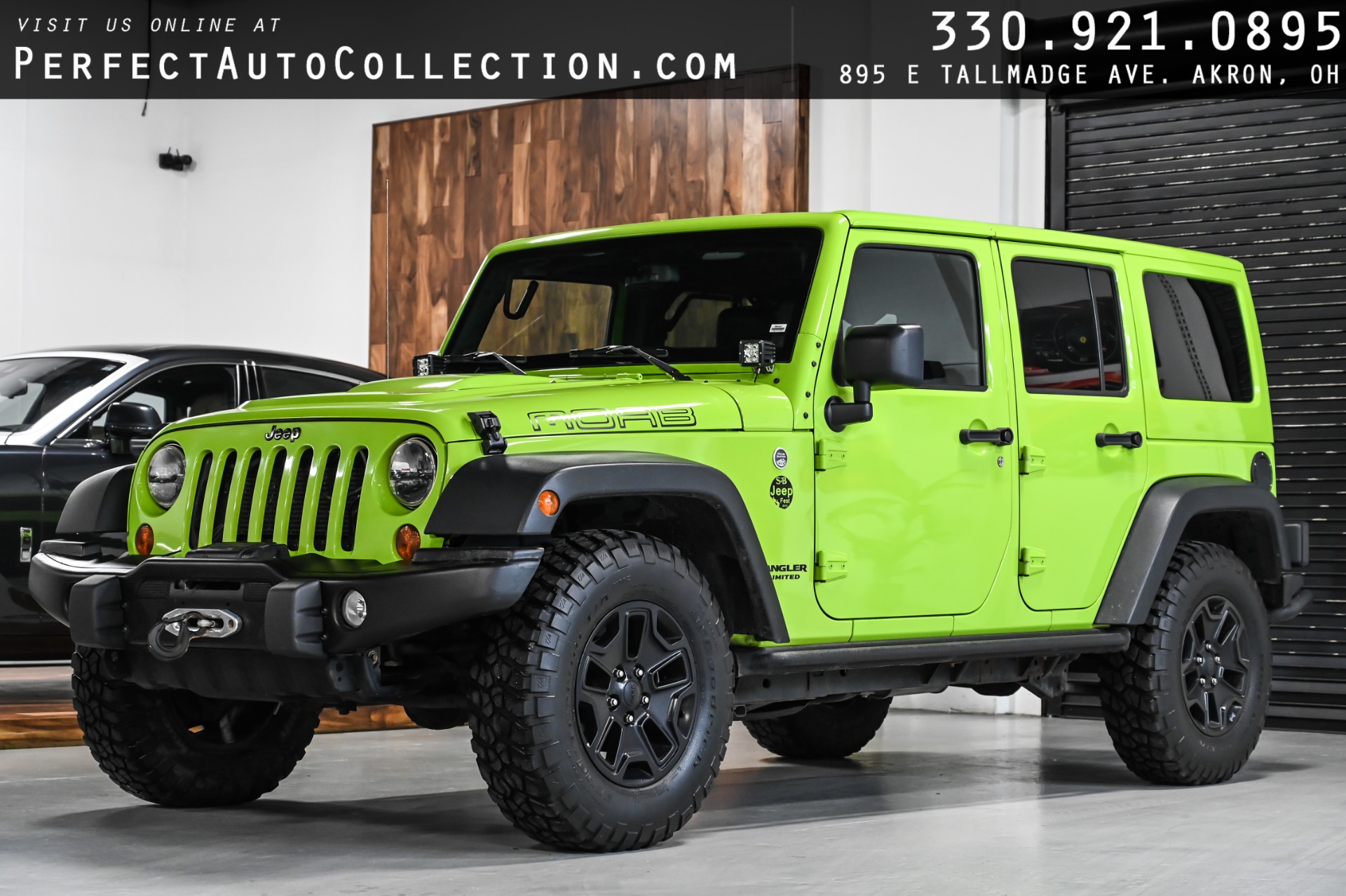
- Rust (The TJ’s Arch-Nemesis): This is by far the most critical area to inspect. Jeeps are prone to rust, especially if driven in salted road conditions or coastal areas.
- Frame: Inspect the frame rails meticulously, particularly around the control arm mounts (upper and lower), skid plates, and suspension mounting points. Look for flaking, holes, or significant pitting. Frame rust can be a deal-breaker.
- Body: Check the rocker panels, floorboards (under the carpet, especially near drain plugs), wheel wells, fenders, and the tailgate. The area around the windshield frame and door hinges can also rust.
- Engine Health (4.0L I6):
- Leaks: Look for oil leaks (common around the oil pan gasket, rear main seal, valve cover gasket) and coolant leaks (radiator, hoses, water pump).
- Sound: Listen for strange noises like knocking, ticking, or excessive lifter noise. A healthy 4.0L should run smoothly.
- Fluids: Check the oil and coolant condition. Brown, milky oil indicates possible coolant contamination.
- Transmission & Drivetrain:
- Manual (AX-15): Test all gears, listen for grinding, and check clutch engagement. A spongy or very high clutch pedal could indicate wear.
- Automatic (32RH): Check for smooth shifts, no harsh jerking. Ensure the fluid is red and doesn’t smell burnt.
- Transfer Case (NP231): Engage 4WD (high and low range). It should engage smoothly without excessive clunking. Check for leaks around the seals.
- Axles & U-Joints: Look for leaks at the differential covers and pinion seals. Check the U-joints on the drive shafts and front axles for play or rust.
- Suspension & Steering:
- Bushings: Inspect all suspension bushings (control arms, sway bars) for cracks or deterioration.
- Shocks & Springs: Look for leaking shocks and sagging springs. If lifted, assess the quality of the lift kit components.
- Steering Components: Check for excessive play in the steering wheel. Inspect the tie rods, drag link, and ball joints for wear.
- Electrical & Interior:
- Lights & Gauges: Test all interior and exterior lights, turn signals, wipers, and ensure all dashboard gauges are functional.
- HVAC: Test the heater and air conditioning.
- Interior Condition: Inspect seats, carpets (lift carpets to check floorboards for rust/water damage), and dashboard.
- Modifications: Many TJs are modified. While some mods are beneficial, poorly installed or extreme modifications can cause problems. Inquire about the history of modifications, their purpose, and if professional installation was done. Be wary of poorly done lift kits, oversized tires without re-gearing, or shoddy wiring.
The Buying Process: Tips for a Smooth Transaction
Finding the right "Used 97 Jeep Wrangler For Sale" requires patience and diligence.
- Research Market Value: Use online classifieds (Craigslist, Facebook Marketplace, AutoTrader) and dedicated Jeep forums to understand the going rates for 97 TJs in various conditions in your area. Prices vary widely based on mileage, condition, modifications, and location.
- Vehicle History Report (VHR): Invest in a CarFax or AutoCheck report. This can reveal crucial information like accident history, title issues (salvage, flood), reported mileage, and service records.
- Pre-Purchase Inspection (PPI): This is non-negotiable. Have a trusted mechanic, ideally one familiar with Jeeps and off-road vehicles, perform a thorough inspection. They can spot issues you might miss and provide an estimate for necessary repairs.
- Test Drive:
- Drive on varying road surfaces. Listen for unusual noises (clunks, grinding, squeaks).
- Test the brakes (no pulling or pulsing).
- Test 4WD engagement (if safe, on a loose surface like gravel).
- Pay attention to steering feel and alignment.
- Negotiation: Armed with your inspection findings and market research, be prepared to negotiate the price. Factor in the cost of any immediate repairs or maintenance.
- Paperwork: Ensure the title is clear and matches the VIN on the vehicle. Complete a bill of sale with all details, including the purchase price, date, and VIN. Understand your state’s requirements for title transfer and registration.
Customization and Maintenance for Your 97 TJ
Owning a 97 TJ is just the beginning of the adventure. Its robust aftermarket support means you can tailor it to your exact needs and desires.
- Common Upgrades:
- Lift Kits: Ranging from mild 2-inch lifts for tire clearance to extreme 6-inch+ lifts for serious off-roading.
- Tires: Larger, more aggressive tires for improved traction off-road. Ensure appropriate gearing for tire size.
- Bumpers & Winches: Heavy-duty bumpers for protection and mounting points for recovery gear.
- Armor: Skid plates, rock sliders, and corner guards to protect vulnerable components.
- Lighting: LED light bars and auxiliary lights for enhanced visibility.
- Interior: Seat covers, storage solutions, and improved audio systems.
- Essential Maintenance: Regular maintenance is key to the longevity of your TJ.
- Fluid Changes: Engine oil, transmission fluid, transfer case fluid, and differential fluids.
- Greasing: Regularly grease U-joints and other zerks.
- Brakes: Inspect pads, rotors, and fluid regularly.
- Tires: Rotate tires and check pressure for even wear.
- Rust Prevention: Wash the underside regularly, especially after off-roading or driving on salted roads. Consider applying undercoating.
Potential Challenges and Solutions
While the 97 TJ is a fantastic vehicle, be aware of common challenges:
- Rust: As discussed, it’s the biggest enemy. Solution: Thorough pre-purchase inspection, immediate repair of any rust spots, and proactive prevention. Frame repair kits are available for minor issues, but significant frame rust often requires professional welding or a frame swap.
- Previous Owner Modifications: Some modifications can be poorly done or detrimental. Solution: Critical assessment during inspection, and budgeting for potential re-dos or removal of problematic aftermarket parts.
- Fuel Economy: Don’t expect great gas mileage. The 4.0L engine is reliable but thirsty, especially with larger tires. Solution: Accept it as part of the Jeep experience, or drive conservatively.
- Leaks: TJs are known for minor leaks (oil, coolant, power steering, soft top). Solution: Regular checks, timely gasket/seal replacement, and keeping a keen eye on fluid levels.
Used 97 Jeep Wrangler For Sale: Estimated Price Guide
Please note that these are estimated price ranges and can fluctuate significantly based on geographic location, exact mileage, specific modifications, maintenance history, and overall condition. Always conduct your own market research.
| Condition Category | Estimated Price Range (USD) | Key Characteristics & Considerations |
|---|---|---|
| Poor/Fair | $3,000 – $6,000 | Significant rust (frame/body), major mechanical issues (engine/trans/4WD), high mileage (>200k), neglected maintenance, needs substantial work. Project vehicle. |
| Good | $6,500 – $11,000 | Moderate rust (surface/minor body), some mechanical issues (leaks, worn suspension), high mileage (150k-200k), serviceable condition but needs investment. Daily driver with work. |
| Excellent | $11,500 – $18,000+ | Minimal to no rust, well-maintained engine/drivetrain, lower mileage (<150k), clean interior/exterior, may have tasteful and well-installed modifications. Desirable condition. |
| Highly Modified/Restored | $15,000 – $25,000+ | Professionally built, extensive high-quality modifications (engine, axles, suspension), frame-off restoration, rare options. Niche market, condition dependent. |
Frequently Asked Questions (FAQ) about the 1997 Jeep Wrangler
Q1: Is the 1997 Jeep Wrangler a good year to buy?
A1: Yes, the 1997 model year is highly regarded. It was the first year of the TJ generation, which brought significant improvements like the coil-spring suspension for a much better ride quality compared to its leaf-sprung predecessor (YJ), while retaining the iconic 4.0L inline-six engine and solid axles.
Q2: What’s the typical mileage I should expect on a used 97 TJ?
A2: Given its age, most 1997 TJs will have high mileage, typically ranging from 150,000 to 250,000 miles or more. The 4.0L engine is known for its longevity, so high mileage isn’t necessarily a deal-breaker if the vehicle has been well-maintained. Focus more on overall condition and maintenance history.
Q3: Are parts for the 1997 Wrangler hard to find?
A3: No, quite the opposite. The TJ generation (1997-2006) is incredibly popular, and the aftermarket for parts and accessories is vast. Most mechanical and body parts are readily available from dealerships, auto parts stores, and numerous online retailers specializing in Jeep parts.
Q4: How much does it cost to insure a 97 Wrangler?
A4: Insurance costs vary widely based on your location, driving record, chosen coverage, and the specific insurance company. However, as an older vehicle, the 1997 Wrangler is generally more affordable to insure compared to newer models, especially if it’s not considered a high-performance or high-theft risk vehicle.
Q5: Can I daily drive a 1997 Jeep Wrangler?
A5: Yes, many people daily drive their 1997 TJs. The coil-spring suspension offers a more comfortable ride than older Jeeps, making it feasible. However, be prepared for a "Jeep" ride – it’s not as refined as a modern SUV, can be noisy (especially with a soft top), and fuel economy isn’t its strong suit. Its reliability makes it a viable daily driver if you accept its quirks.
Q6: What’s the main difference between a TJ and a YJ Wrangler?
A6: The primary difference is the suspension and headlights. The YJ (1987-1995) used leaf springs and had square headlights. The TJ (1997-2006) introduced a coil-spring suspension for a more comfortable ride and brought back the classic round headlights.
Conclusion
The "Used 97 Jeep Wrangler For Sale" represents more than just a pre-owned vehicle; it’s an opportunity to acquire a legendary off-road machine with a rich history and a vibrant future. With its robust 4.0L engine, comfortable coil-spring suspension, and timeless design, the 1997 TJ offers an unmatched blend of capability and classic appeal.
While diligent inspection for rust and mechanical issues is crucial, the rewards of owning this iconic Jeep are immense. You’re not just buying a mode of transportation; you’re investing in a lifestyle, a community, and countless adventures waiting to happen. By following this guide, you’ll be well-equipped to find a well-maintained 97 TJ and embark on your journey with confidence, ready to embrace the freedom only a Wrangler can offer.
